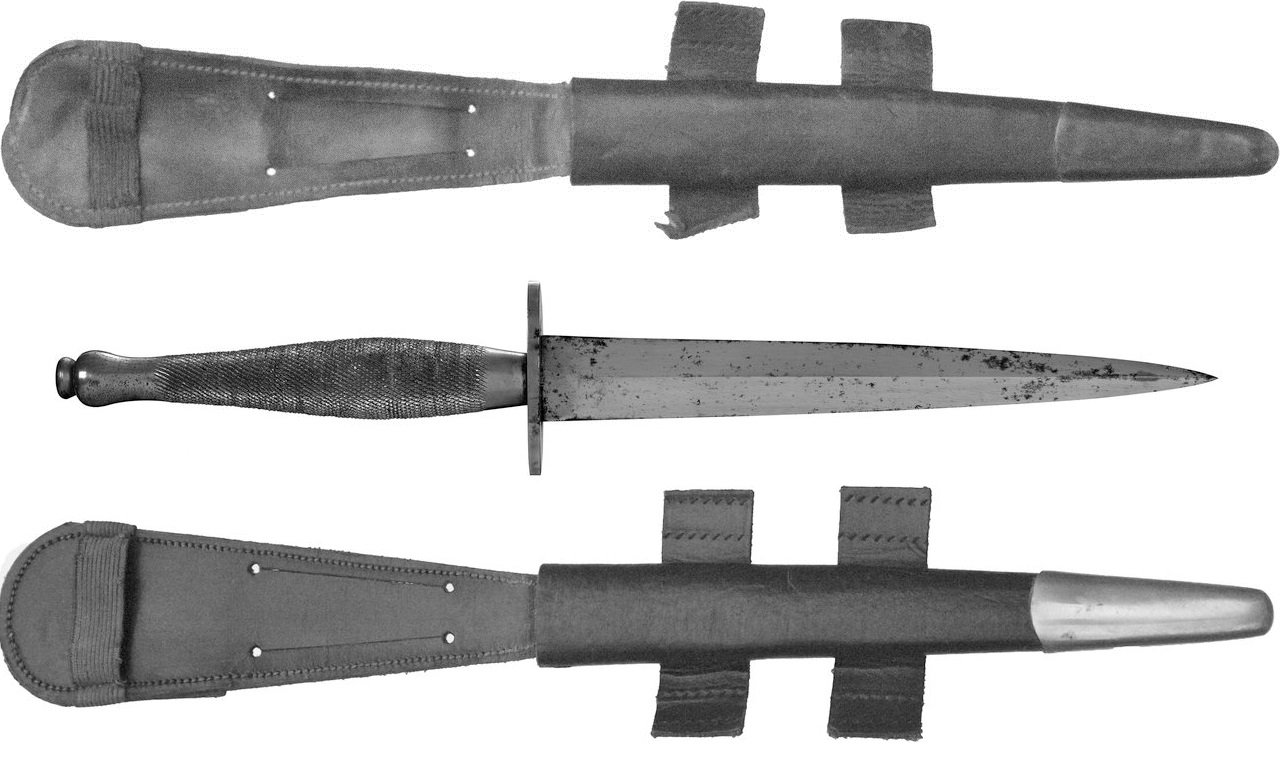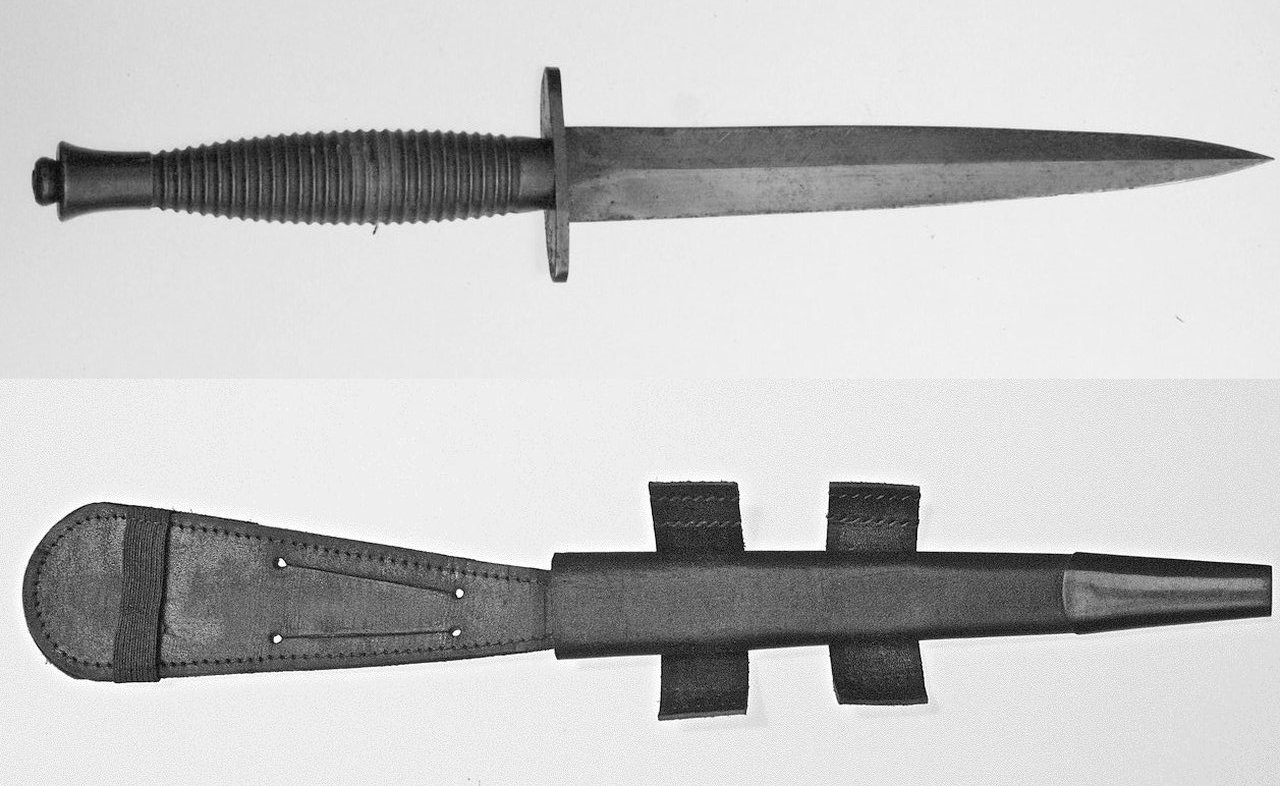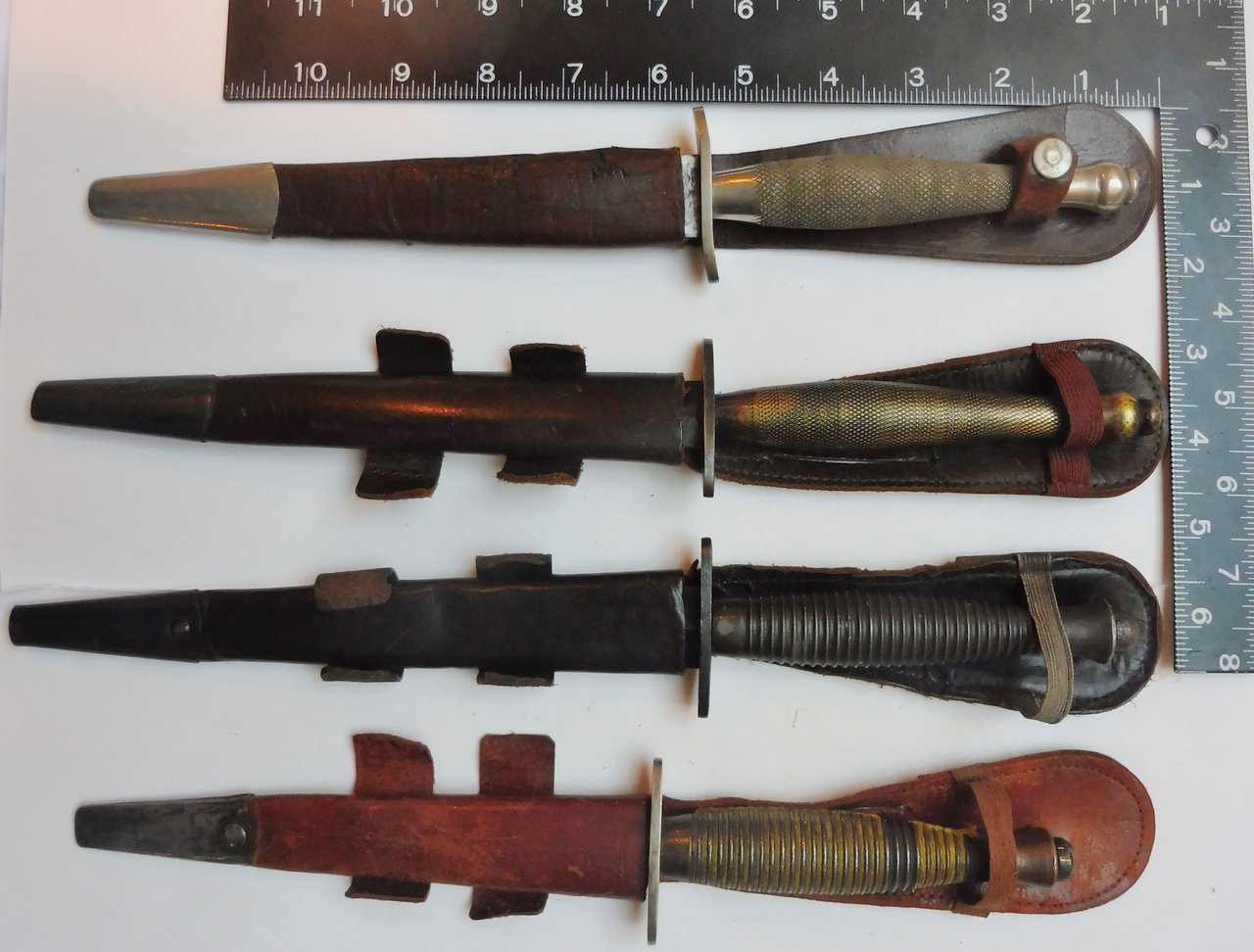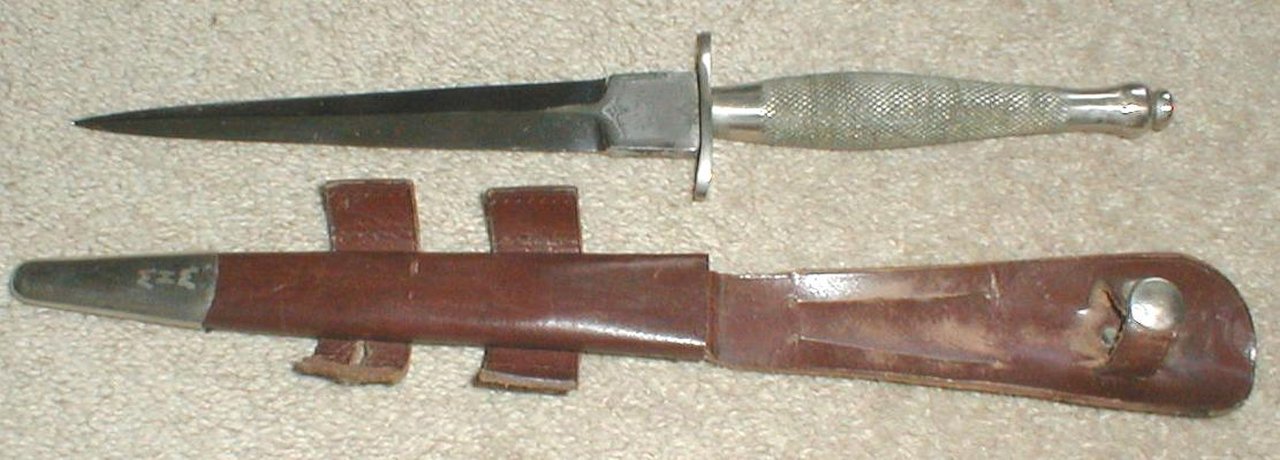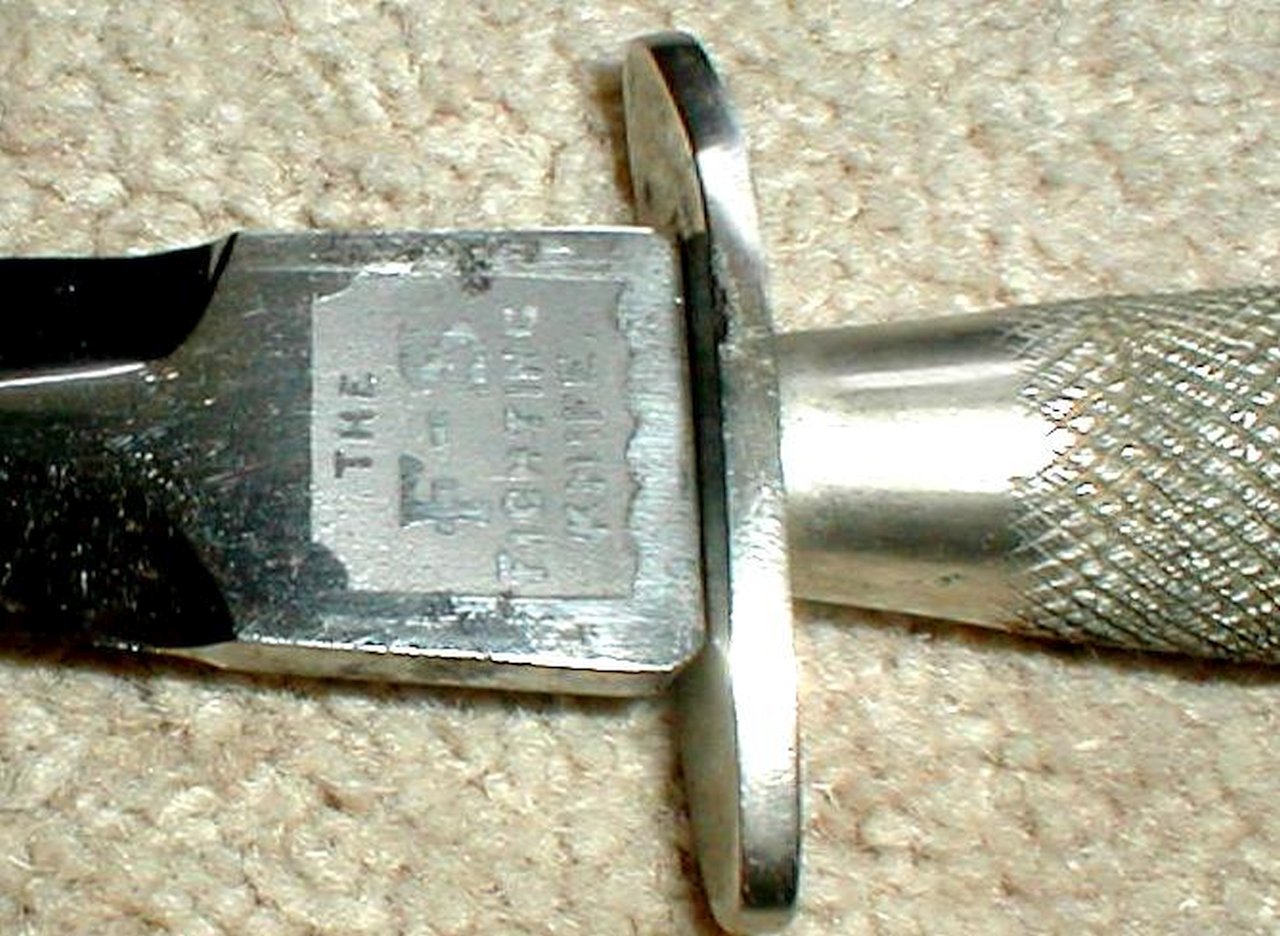Designed by William Ewart Fairbairn and Eric Anthony Sykes who had developed a prototype similar to this while serving with the Shanghai Military Police. They worked with Wilkinson Sword of London on the design in November 1940 and initial orders were placed by Captain Leslie Wood RE for the newly formed Commandoes, Auxiliary Units and SOE
The 1st Pattern Fairbairn Sykes fighting knife was introduced in 1940 and produced by Wilkinson Sword. It is a double edged dagger blade with medial ridge. Blade lengths vary as they were hand ground. A 1st Pattern leather scabbard has a nickel plated brass chape, integral belt loop and press stud fastener. The grip is made from solid brass and cut by 16 lines per inch in a diamond pattern. The grip and handguard were nickel plated. The hand guard was curved to S-shape.
As the blade was grounded by hand. For this reason it is difficult to find two blades of exactly the same size and shape.
Marked with maker Wilkinson Sword co. Ltd. London on one side and The F-S Fighting Knife on the other. This model was produced in very limited numbers.
Approximate length 300mm
The 2nd Pattern Fairbairn Sykes fighting knife was produced in 1941. Normally these 2nd Pattern knives are not marked with any name or mark referring to the manufacturer.
The image shows a MoD 2nd pattern Fairbairn Sykes knife. This was issued to Auxilier Bob Millard in 1941 after he joined Auxiliary Units, Bathampton Patrol in 1940 Please note the scabbard has silent strap and four leather tabs intended to stitch to the uniform.
Mr Millard recalled “our Patrol sewed the F-S securing tabs [on the side of the scabbard] to loops so the knife could be slipped on to a belt and worn horizontally on the small of the back under a pack carrying explosives. It was easily accessible if you were lying behind a sentry and did not want to foul up when crawling".
Blade length approximately 179mm
The 3rd Pattern Fairbairn Sykes fighting knife was produced in 1942. To support the demand for faster and cheaper production a new cast grip was produced. It is thought to be the design of the Joseph Rodgers firm, of Sheffield. By this time more than 100 different companies made and/or sold the Commando knives. It had 27 concentric rings, and was cast in a non-strategic alloy.
In about September of 1942, the so-called ring grip pattern was introduced, and quickly became standard. The blade was now machine forged.
Overall length 300mm
Ron Flook
John Pidgeon
